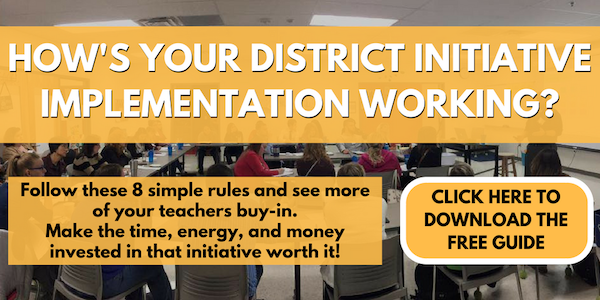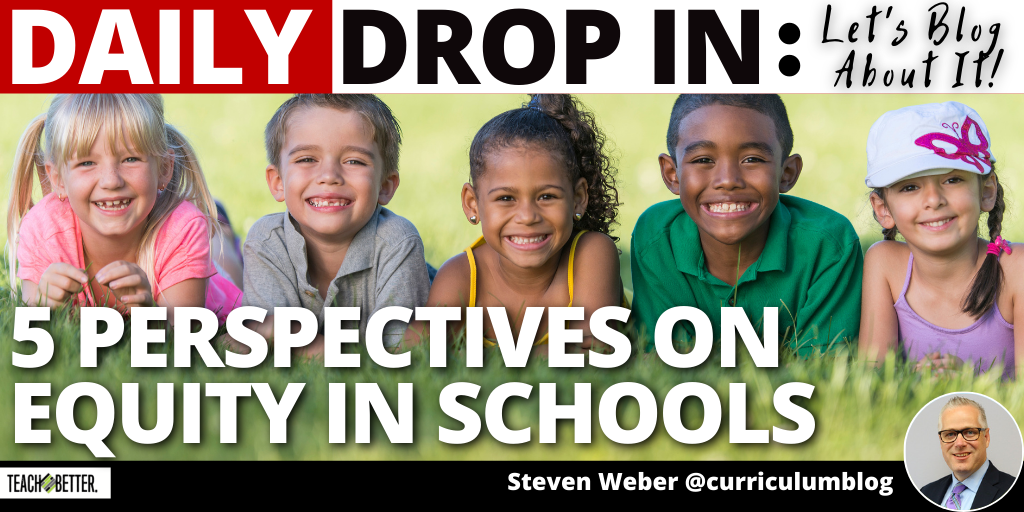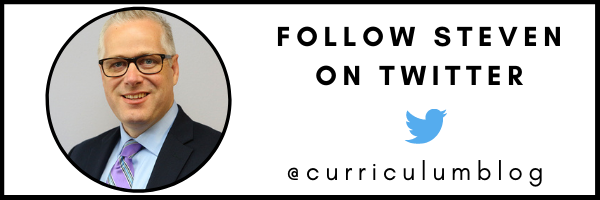TL;DR:
- 5 perspectives on equity in schools include believers, doubters, traditionalists, bystanders, and upstanders.
- Exclusion and intolerance have no place in public education.
Steven joined Rae Hughart for an episode of the Daily Drop In to discuss equity and inclusion.
There is a growing movement to denounce terms such as equity, inclusion, and culturally responsive teaching. Headlines, social media posts, and newsletters from state and national organizations are sounding the alarm. Across the United States, school board members have listened to public comment from concerned citizens who want to know why equity and inclusion are being taught in public schools.
The Outcry Over Diversity, Equity, and Inclusion
Some community members have questioned if schools have lost their focus and others have declared that diversity, equity, and inclusion (DEI) is an attempt to indoctrinate our children.
The public outcry sounds similar to this parent’s frustration (Warwick Valley School District, New York):
“I will do everything in my power to sue the district to pull my tax dollars out of the district for their attempt to irreparably damage the psyche of my child and ruin his educational experience. Be aware I am not alone in feeling this way. The vast majority of Warwick hard-working parents will not sit idly by while this radical curriculum is pushed on our children” (Tucker, 2021).
Public schools are designed for all students and families in a community. While this has not always been the case in education, laws have been passed and educators have embraced the opportunity to prepare all students for life. In 1954, the Supreme Court ruled in favor of inclusion in Brown v Board of Education of Topeka. Chief Justice Warren wrote that “in the field of public education the doctrine of ‘separate but equal’ has no place,” as segregated schools are “inherently unequal” (Smithsonian National Museum of American History, 2021).
While the Supreme Court ruled in 1954 that students could not be separated in schools because of race, students with disabilities were not guaranteed a free and appropriate education. The Individuals with Disabilities Education Act (IDEA), the federal law that supports special education, was passed in 1975. More than 7.5 million (as of school year 2018-19) eligible infants, toddlers, children, and youth with disabilities benefit from IDEA (U.S. Department of Education, 2021).
If you are serious about equity work and you would like to be an upstander for students, consider addressing the following questions with your co-workers. Click To Tweet5 Perspectives on Equity In Schools
As school districts and communities discuss curriculum and instruction, instructional materials, board policies, and the vision of serving all students, there are five common perspectives that are common across school districts.
Believers
Most teachers fall into this category. When they entered the field of education, they believed they could reach all students and that all students deserve a high quality education. Believers are willing to passionately lead and embrace the mission of high levels of achievement for all students, regardless of race, social class, ethnicity, culture, disability or language proficiency.
Doubters
A doubter is similar to a skeptic. Individuals who are doubters may ask, “Will my child have to lose something in order for other students to gain an opportunity?” When education is focused on all students, some community members ask if schools are lowering the bar for students.
Traditionalists
A traditionalist wishes to maintain the status quo. It is difficult for a traditionalist to see the need for change. “Three generations of our family went to high school here and it worked for our family.” A traditionalist may ask, “Why are we trying to be politically correct and use terms like inclusion when the schools should be teaching reading and writing?”
Bystanders
Bystanders witness or know about an act of injustice but choose not to do anything about it. They may feel comfortable knowing that a majority of non-white students do not enroll in advanced courses. Bystanders may observe a curriculum that excludes groups of students and choose to continue teaching the same curriculum year after year. A bystander may have stood on the sidelines for so many years that they do not even recognize that they have stopped teaching and advocating for all learners.
Upstanders
Unlike a bystander, an upstander—when confronted with information about inequity or injustice—takes steps to prevent or stop this act from continuing. In school districts across the United States, board members, superintendents, principals, teachers, counselors, custodians, curriculum directors, and coaches are choosing to be upstanders. Community members and families are also joining educators to speak up for students and provide them with a quality education.
Public Schools Before Equity
In the 1930s, public schools were not open to all students. Mr. Feingold, a high school principal, gave a speech and declared, “The bulk of our high school population is moronic and unfit for the profitable pursuit of high school studies, as we know them. We have been hearing of late, for instance, that 50 percent of high school enrollment is made up of the sons and daughters of conductors, factory workers, and scrubwomen, and since they will themselves become motormen, truck drivers, and charwomen, the education of the high school ought to be of a type which will prepare them for that sort of life” (1934, pp. 828-829).
Imagine if a principal or school board member made such a statement in 2021. While every school district has strengths, weaknesses, and opportunities for growth, public schools are designed to support all students.
[scroll down to keep reading]
Students in U.S. Schools
The data highlights that schools are increasingly diverse and demographics in public schools are changing.
“Of the 50.7 million students enrolled in public elementary and secondary schools in fall 2017, 24.1 million were white, 7.7 million were Black, 13.6 million were Hispanic, 2.8 million were Asian/Pacific Islander, half a million were American Indian/Alaska Native, and 2 million were two or more races. The percentage of students who were white decreased from 61 to 48 percent between fall 2000 and fall 2017, and it is projected to continue decreasing to 44 percent by fall 2029” (NASSP, 2021).
If you are serious about equity work and you would like to be an upstander for students, consider addressing the following questions with your co-workers.
Questions for Upstanders
Curriculum
Does the curriculum prepare all students with opportunities to succeed in this grade level and at the next level?
Student Data
Does the school data regarding student growth and achievement highlight equity concerns that need to be addressed?
Recruitment and Retention
Do students see teachers and staff who reflect the demographics of the school and community?
Family Engagement
Do the parent organizations and leadership in the organizations reflect the student demographics?
Classroom Materials
Do students see windows and mirrors when they read classroom books and assigned materials?
Conclusion
As public schools continue to teach all students, it will be important for educators and communities to embrace the purpose of a public education. Teaching students to become productive members of society is a goal that educators must continue to pursue. The students we teach look much different than those described in Principal Feingold’s school.
When educators and community members embrace diversity, equity, and inclusion, the goals of education in a democratic society will be realized. Equity in schools is evident when superintendents, boards, teachers, administrators, and staff commit to developing classrooms, policies, and systems that provide students with what they need. The removal of equity and inclusion from public schools would make them private. The next time you hear someone say, “I wish schools would return to normal,” remind them that exclusion and intolerance should have no place in public education.
References
Feingold, G. (1934). The basic function of secondary education. School and Society, 40, 825-32.
NASSP. (2021). Position statement: Racial justice and educational equity. Retrieved from https://www.nassp.org/wp-content/uploads/2021/01/NASSP21ADV-0060_WS_Postion_Statements_Racial_Justice_P2a.pdf.
Smithsonian National Museum of American History (2021). Separate is not equal: Brown v Board of Education. Retrieved from https://americanhistory.si.edu/brown/history/5-decision/courts-decision.html.
Tucker, B. (2021, April 13). Outcry of ‘indoctrination’ as school district dips toe into
equity work. The Chronicle. Retrieved from
http://www.chroniclenewspaper.com/news/local-news/outcry-of-indoctrination-as-school-district-dips-toe-into-equity-work-FN1593755.
U.S. Department of Education. (2021). Individuals with disabilities act. Retrieved from https://sites.ed.gov/idea/about-idea/.
About Steven Weber
Dr. Steven Weber is the Associate Superintendent for Teaching and Learning with Fayetteville Public Schools (AR). His areas of research include curriculum design, formative assessment, professional learning, and school leadership.



